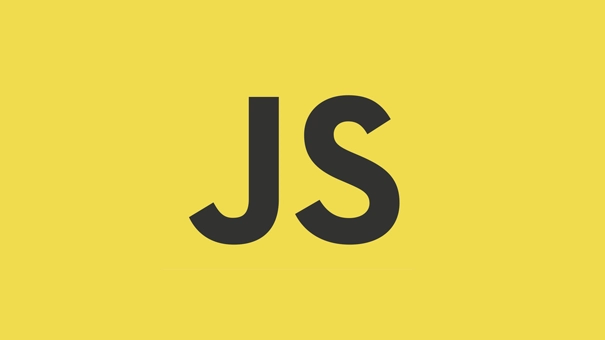Welcome back to Daily Depth! In today's episode, we're going to unravel a fundamental and often misunderstood concept in JavaScript: closures. Understanding closures is essential for writing more powerful, flexible, and maintainable JavaScript code.
What Exactly is a Closure?
In simple terms, a closure is a function that "remembers" its outer scope (lexical environment) even after the outer function has finished executing. This means that the inner function can still access variables and parameters defined in its outer function's scope.
Think of it like a backpack carried by the inner function. Even after the outer function has gone on its way, the inner function still has access to the items (variables) it packed in its backpack.
Understanding the Mechanics: Lexical Environment
To understand closures, you need to grasp the concept of a lexical environment. When a function is created in JavaScript, it not only has its own scope (where its local variables are defined) but also remembers the scope it was created within. This "memory" of its surrounding environment is its lexical environment.
When an inner function is defined within an outer function, the inner function's lexical environment includes the outer function's scope. This link persists even after the outer function has completed its execution.
A Simple Example:
Let's illustrate this with a basic example:
function outerFunction(outerVar) {
let innerVar = 'Hello from inner';
function innerFunction() {
console.log(outerVar);
console.log(innerVar);
}
return innerFunction;
}
const myClosure = outerFunction('Hello from outer');
myClosure(); // Output: Hello from outer
// Hello from inner
Here's what's happening:
outerFunctionis called with the argument'Hello from outer'.- Inside
outerFunction,innerVaris defined. innerFunctionis defined. Its lexical environment includes the scope ofouterFunction, so it has access toouterVarandinnerVar.outerFunctionreturnsinnerFunction. Notice thatouterFunctionhas now finished executing.- We store the returned
innerFunctionin themyClosurevariable. - When we call
myClosure(), even thoughouterFunctionhas completed,myClosure(which isinnerFunction) can still accessouterVar(which was'Hello from outer') andinnerVarbecause it "closed over" these variables from its lexical environment when it was created.
Why are Closures Useful?
Closures are a powerful feature in JavaScript and have several important use cases:
1. Data Privacy (Emulating Private Variables with Modules):
Closures can help create a sense of privacy for variables. By defining variables within an outer function, their scope is limited to that function and any inner functions that form a closure over them.
function createCounter() {
let count = 0;
return {
increment: function() {
count++;
},
decrement: function() {
count--;
},
getCount: function() {
return count;
}
};
}
const counter = createCounter();
counter.increment();
counter.increment();
console.log(counter.getCount()); // Output: 2
// We cannot directly access 'count' from outside the closure.
In this example, count is only accessible through the increment, decrement, and getCount methods. This emulates the concept of private variables.
2. Maintaining State:
Closures allow inner functions to retain access to variables from their outer scope even after the outer function has finished. This is useful for maintaining state across multiple invocations of the inner function.
function multiplier(factor) {
return function(number) {
return number * factor;
};
}
const multiplyByTwo = multiplier(2);
const multiplyByTen = multiplier(10);
console.log(multiplyByTwo(5)); // Output: 10 (remembers factor is 2)
console.log(multiplyByTen(5)); // Output: 50 (remembers factor is 10)
Here, multiplyByTwo and multiplyByTen are closures that "remember" the factor passed to the multiplier function.
3. Function Factories:
The multiplier example above also demonstrates the concept of function factories – functions that return other functions. Closures enable these returned functions to be customized based on the arguments passed to the factory function.
4. Callbacks and Event Handlers:
Closures are commonly used in callbacks and event handlers. The callback function often needs to access variables from its surrounding scope where it was defined.
function handleClick(elementId, message) {
const element = document.getElementById(elementId);
if (element) {
element.addEventListener('click', function() {
console.log(`Element with ID "${elementId}" was clicked. Message: ${message}`);
});
}
}
handleClick('myButton', 'You clicked the button!');
// The anonymous function inside the event listener closes over elementId and message.
Potential Drawbacks (Memory Considerations):
While closures are powerful, it's important to be aware of potential memory implications. The variables from the outer scope that are closed over by the inner function are retained in memory as long as the closure exists. If you create many closures that close over large amounts of data, it could potentially lead to increased memory consumption. However, in most common scenarios, this is not a significant issue if handled responsibly.
Conclusion
Closures are a fundamental aspect of JavaScript that enable powerful programming patterns. They allow inner functions to retain access to their outer scope, even after the outer function has finished executing. This capability is crucial for data privacy, maintaining state, creating flexible functions, and working with asynchronous code and event handling. Mastering closures will significantly enhance your JavaScript skills and allow you to write more sophisticated and efficient code.
Stay tuned for the next episode of Daily Depth as we explore another intriguing software development concept!
